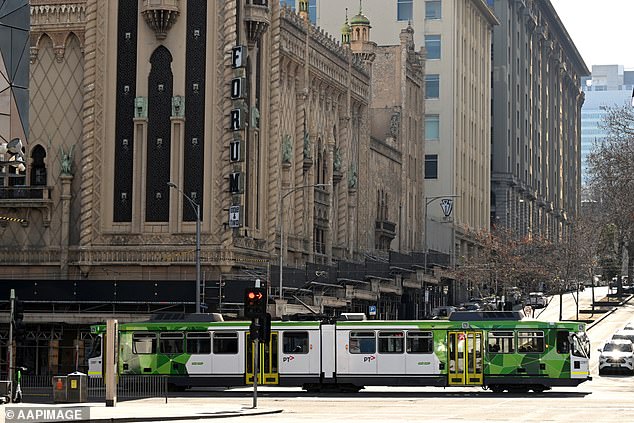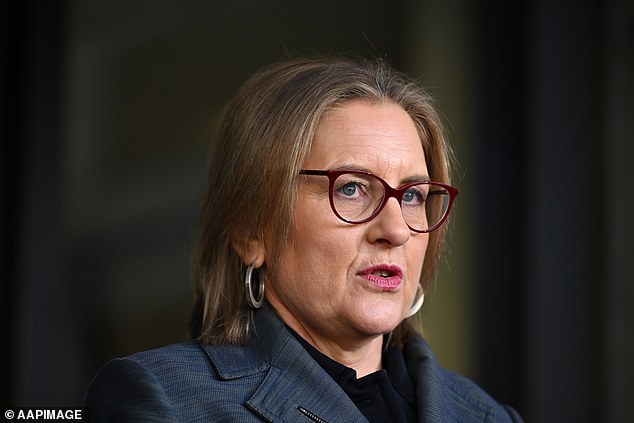There may be a housing shortage causing a crisis across the country, but in Victoria Premier Jacinta Allan is happy to allow public servants to continue working from home (if they have one) rather than returning to the office.
It’s a contrast to New South Wales, where Premier Chris Minns has just ordered the state bureaucracy back to work. Opinions are divided, but the premier says he won’t budge.
Three years into the pandemic, Victoria has no plans to follow suit. Instead, a spokesman for Allan has called on all disgruntled NSW public servants to move south to Victoria if they are unhappy with being called back to their jobs.
It is not a popular decision (at least not among businesses) by the Victorian Labor government, which presided over the longest and most restrictive COVID-19 lockdowns in the world. The state’s economy has been brought to a standstill ever since.
It’s certainly not popular with CBD businesses that continue to struggle as many Victorians take advantage of convenient work-from-home arrangements.
The state has rising vacancy rates among the city’s office buildings. Despite the housing crisis forcing many Australians into shared accommodation or sometimes no accommodation at all, office vacancy rates in Melbourne’s CBD continue to rise. They currently stand at 18 per cent, meaning almost one in five offices are empty and unused.
These are the highest vacancy rates in the country and have been for some time. The fact that office vacancies in Melbourne continue to worsen is further damaging an already weak state economy. This is happening at a time when state government debt is very large and rising.
Businesses in Melbourne’s CBD are clamouring for the Victorian government to copy the policy shift taking place in New South Wales rather than using it to try to attract more home-based bureaucrats from the north, as some sort of populist attempt among workers who relish not having to get dressed in the morning and commute to an office.
Victoria Premier Jacinta Allan says she will not change her stance on public servants and their work-from-home arrangements

Melbourne sees rising vacancy rates among city office buildings
With the US stock market plunging last night on fears of a recession, global markets also faltered, spreading fears around the world.
On one level, this could be good news for homeowners struggling with high interest rates: rates may have to come down to stimulate economic activity if Australia’s per capita recession turns into a technical recession.
But it is certainly more bad news for retailers that rely on consumer spending. If a recession is looming, people will tighten their spending belts, which will only add to the difficulties for inner-city retailers already struggling with lower turnover and footfall because so many people in Melbourne are working from home.
The state public service is Victoria’s largest employer. Current policy allows bureaucrats to split their working time between home and the office, with no evidence that time in the office is even required.
Businesses insist that working from home frustrates national efforts to boost productivity, but advocates argue that flexibility is good for work-life balance and also encourages greater participation in the workforce. They also see it as an important measure to encourage more women to return to work after starting a family.
Whether you support or oppose work-from-home arrangements often depends on which generation you belong to. Younger workers are more likely to be in favor of such flexibility, especially in light of its prevalence during the pandemic. Older workers are less supportive.
While private organizations can structure their employment arrangements however they like to benefit their business (with varying results across sectors), there is an argument that the state, as an employer, has other responsibilities.
On the one hand, it should be a model employer that supports greater flexibility in the workforce.
However, state bureaucracies also suffer from low productivity, and governments arguably have a duty to structure their workforces in a way that supports other enterprises within the community.
This may include return-to-work provisions that help the struggling retail sector and landlords struggling with high office vacancies.
These have clearly become priorities for the New South Wales government, but not for the Victorian government.
If a state like Victoria is not going to need more office time for its public service as the pandemic fades from view, it should at least improve government approval processes to allow office building owners to convert their unused space into more housing.
More units in the city center could help solve the housing crisis, including lowering rental prices as a result of more homes coming on the market. At the same time, it could provide another way to reduce office vacancy rates that are hurting the economy.
This would also mean that inner-city residents could work from home but still frequent Melbourne’s city and surrounding retail businesses, which are struggling with low footfall.

